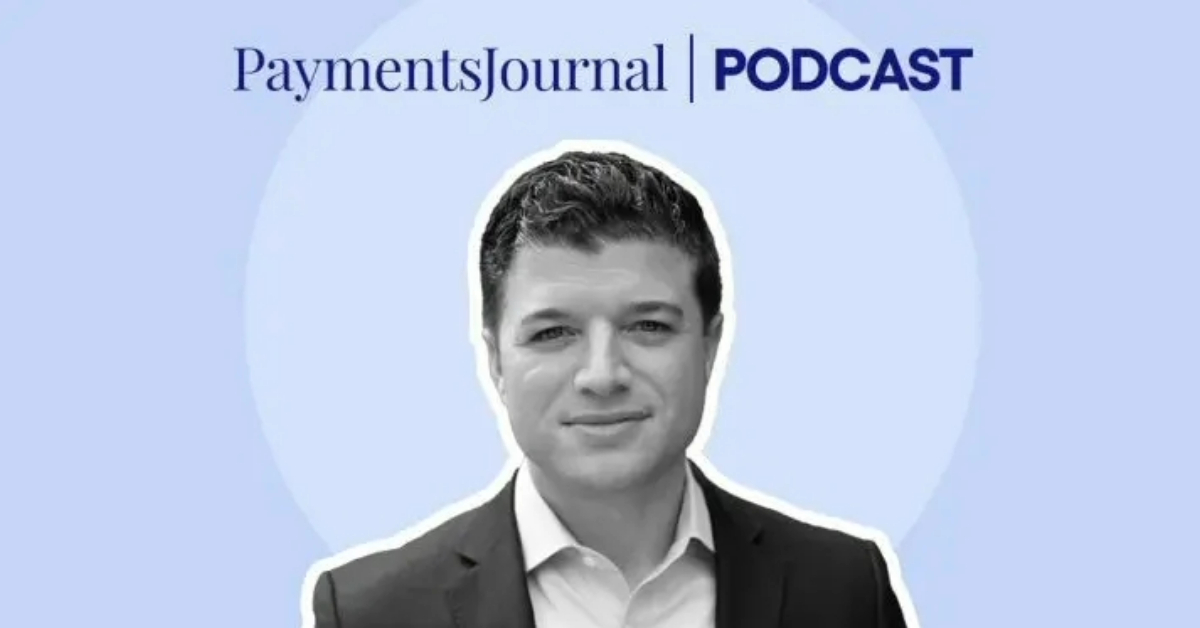
Thanks to its breadth and depth, First Data has deep insight into the ebbs and flow of digital commerce. To kick off 2019, we have compiled five key trends in digital payments that will shape the industry this year.
1. This will be a Transformative Year in European Payments
Last week, British Prime Minister Theresa May suffered an historic defeat1 in Parliament, as MPs rejected her government’s middle-of-the-road Brexit strategy while falling short of enough votes to force a general election. So, with two months to go before the March 29 deadline, the situation in the U.K. is this: MPs are divided between wanting a “harder” Brexit, a “softer” Brexit, or “no” Brexit. In other words, they are nowhere close to an agreement.
Britain has already lost a trillion dollars2 from its banking sector, and left with few options, many financial institutions are posturing for a “hard” Brexit – where the U.K. is removed from both the EU and the European Common Market – meaning, payment providers and their merchant clients would need to collocate or relocate to the continent to support pan-European processing. While that scenario is anything but sure thing, it is a contingency that providers are prepared to execute against.
First Data also stands ready to provide technical assistance and insights to all our clients, no matter what the Brexit outcome. We will also have updates as any decisions from the U.K. once they happen.
Not far behind Brexit, the European Banking Authority is also working on a clearer set of standards for its Payment Services Directive 2 (PSD2.) The regulation orders banks to share their customers’ data with third-party payment providers and to make those payments safer for everyone. While parts of the regulation have been building momentum, the next wave will take legal effect September 14.3
The most relevant impact for merchants and payments will be the introduction of Strong Customer Authentication (SCA) standard, which mandates at least two independent authentication methods for every electronic transaction. There are three identification sources: 4 something the customer knows, like a password or PIN; something the customer has, like a phone or a credit card; and something from the customer’s inherence, like fingerprints or voice identification.
So why does this all matter? After EMV chips significantly reduced5 in-person fraud, cyberthieves increasingly turned to CNP scams which rapidly skyrocketed, going from $3.2 billion in losses in 2015 to an estimated $5.9 billion6 next year. In April7, a more robust and seamless 3-D Secure 2.0 will launch, becoming a powerful new tool to verify online identities. The payments plugin analyzes contextual shopping patterns, quickly approves safe transactions, and flags only the riskiest transactions for additional security prompts. European merchants using 3DS 2.0 will be able to benefit from a shift in liability and satisfy the PSD2 SCA requirement.
We think 3DS 2.0 has significant upside, so we’ll cover 3DS 2.0 in greater detail in an our next blog post.
2. Marketplaces will Transform Retail in New Ways
Until recently, if you were a small-to-medium sized business (SMB) and you wanted to sell your products outside your geographic area, your only choice would be to create an expensive website and pray. But that model has seen a rapid shift over the past few years, as more and more SMBs are seeing online marketplaces as “table stakes” to sell online. Artisans and creative crafters have made Etsy a huge success, which brought millions of highly interested shoppers to the platform. And third-party companies like Shopify and BigCommerce have recently launched integrations into popular marketplaces like Amazon to allow SMBs to quickly set up shop on the marketplace.
And while Amazon’s percentage of direct sales has remained steady over the last three years, its marketplace now captures a much higher share8 of U.S. retail ecommerce sales overall, rising from 22.7% in 2016 to 31.3% last year. Amazon’s top competitors like eBay, Walmart, and Apple are also seeing an explosion of revenue in their omnichannel marketplaces, which, when combined globally, were up more than 30%9 over 2016.
Never one to let a good idea to go unexploited, Amazon launched Storefronts,10 which allows tens of thousands of merchants to sell their goods directly on the Amazon site, in exchange for a monthly fee and a piece of every transaction. And we predict it will be… successful. Like, change-the-game-forever successful. No longer limited to their natural geographic base, brick-and-mortar merchants now have access to millions of new customers around the world.
So, in 2019, we predict these major retailer marketplaces will become the default ecommerce solution for SMBs, who could find new life through global sales.
3. IPOs will Create a Dogfight among On-Demand Platforms
Uber’s expected IPO later this year will be the biggest float in history, with an expected valuation of up to $120 billion.11 It’s main competitor, Lyft, could also go public, with a valuation of up to $20 billion.12 With that kind of money riding on their them, stockholders will demand constant growth. But, how will it expand within a slowing global economy?
In our view, it’ll be through continuing to tap new sources of revenue, and to expand their geographic footprint. Uber claims its UberEats food delivery service will be available in 70% of American households13 this year. So, for Lyft to compete, it may need to acquire its own service. Postmates is one option. Its possible IPO14 this year could show how the market views Postmate’s chances against a dozen competitors. But why not grab up the biggest player of them all – GrubHub,15 which merged with its then-biggest challenger, Seamless?
Asian rideshare giants could be the template for further expansion. The app from Singapore’s Grab service lets users hail taxis or private cars, get food delivered, and send packages. But it also became a digital payments company 16 by enabling customers to use its payments platform to buy goods from third-party vendors. Indonesia’s Go-Jek goes even further, with over a dozen17 distinct on-demand services, including allowing third-party payments from a Go-Jek wallet and a subscription video service plan18 modeled after Netflix.
So, what does this mean for digital commerce? Increasing relevance and consumer traffic among these on-demand platforms will only accelerate the flywheel effect, driving up merchant demand among SMBs to leverage these on-demand platforms to reach more consumers.
4. New Entrants will Accelerate the Subscription Economy
When exercise bikemaker Peloton wanted to gin up interest in its own IPO this year, the CEO introduced a previously untapped revenue source. He now calls Peloton the “Netflix of Fitness,”19 with a plan to charge recurring monthly fees for classes streamed through the exercise equipment, ranging from live spin sessions, to yoga, cooking and running. The model gives Peloton new streams of revenue, without the overhead costs of physical locations.
So, it’s a new and dependable revenue model that’s catching on. In the rental market space, Zillow, which lists prices for homes and apartments on its website, is expanding into recurring payments by collecting rents for landlords.20
In the automotive space, carmakers including Volvo, Porsche, and Ford21 now offer monthly car subscriptions that let you choose new cars on a whim. Online dealers such as Fair and ride-sharing services like Zipcar allow users to make use of short-term (hours to month) rentals. Eventually, self-driving cars will take hold and they’ll ferrying about subscription-holders on daily commutes without the costs of automobile maintenance.
So, what does this mean for payments? The new model of commerce means new challenges for businesses, as they look to keep the recurring payments seamless and in the background. The quickest way to lose a subscriber, after all, is to remind them how much they’re paying each month. Merchants also want to make sure the cost of receiving the payments are kept to a minimum. Look for this space to evolve as new solutions come to market.
5. Digital Goods are Going Global
The idea behind Connected Commerce is to give customers what they want, where they want it, how they want it, and to pay for it seamlessly. That concept is particularly well-suited to selling digital and software services, which actually enhance the mobile commerce platforms themselves.
Netflix was an early trailblazer for distributing digital content globally, when it famously rejected its own business model of mailing DVDs to homes. That allowed it to instead distribute fixed-cost content on any platform, instantly, anywhere in the world.
In a direct challenge to Netflix and YouTube, Facebook is now charging for streaming content over its Facebook Watch22 service. It’s a natural (if belated) extension of its capabilities, enabled by the growth of cross-border commerce and the ability to accept payments in any currency.
But in 2019, look beyond the obvious. Using virtual reality, you can now watch concerts23 in front row seats with all your friends, no matter where they are physically, or, sit courtside at any NBA game.24
Expect that trend to grow. We predict celebrities will begin wearing bodycams and granting pay-per-view access to exclusive events like the Met Gala. Or how about James Cameron, who changed the theater experience forever with the 3D Avatar film? He has the imagination and technical know-how to change it again with Avatar 2 and Avatar 3. Those truly immersive, interactive experiences can be digitized and enjoyed anywhere in the world, over and over again, with no additional costs of production.
But, no matter how digital commerce changes in the coming months, we at First Data will be ready to respond, and to give every client a competitive edge to excel.
So, let’s get started. Say hello… to a new year.
2 https://www.cnn.com/2019/01/07/investing/brexit-banks-moving-assets/index.html
5 https://usa.visa.com/visa-everywhere/security/visa-chip-card-stats.html
6 https://finance.yahoo.com/news/chips-credit-cards-dont-stop-fraud-online-200041701.html
7 https://usa.visa.com/visa-everywhere/security/future-of-digital-payment-security.html
11 https://techcrunch.com/2019/01/07/ubers-ipo-may-not-be-as-eye-popping-as-we-expected/
12 https://www.cnbc.com/2018/12/14/get-ready-for-the-200-billion-ipo-shakeup-in-2019.html
13 https://www.cnbc.com/2018/10/23/uber-plans-to-expand-food-delivery-to-70percent-of-the-us.html
14 https://www.wsj.com/articles/postmates-interviews-banks-for-ipo-1539714939
16 https://techcrunch.com/2017/11/01/grab-takes-a-big-step-into-digital-payments/
17 https://medium.com/gojek-ux/transforming-unicorn-redesigning-go-jek-rider-app-3e532cf738fd
18 https://dailysocial.id/post/go-jek-enters-content-business-soon-to-launch-go-play
19 https://www.cnbc.com/2018/08/03/peloton-looks-to-ipo-next-year-current-4-billion-valuation.html
20 https://www.zillow.com/marketing/rental-manager/collect-rent-online/
22 https://techcrunch.com/2018/08/29/facebook-watch-is-launching-worldwide/
23 https://www.urbandaddy.com/articles/42281/the-worlds-first-virtual-reality-music-platform-is-here




